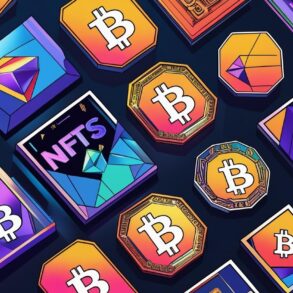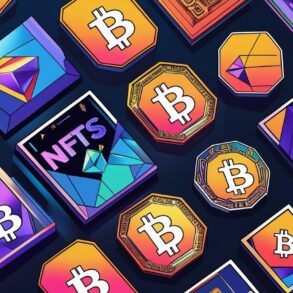I wish someone would have tapped me on the shoulder and taught me these sooner.
The late and famous investor Charlie Munger once said:
“It’s remarkable how much long-term advantage people like us have gotten by trying to be consistently not stupid, instead of trying to be very intelligent.”
Translation? Don’t do dumb stuff.
Avoiding mistakes is just as important as getting things right. Over the years, I’ve learned that keeping it ridiculously simple—sticking to top assets and thinking long-term—is the ultimate cheat code.
Trust me, I’ve been there. Made the mistakes of trading in and out of assets, buying high and selling low and using leverage.
Charlie famously called Bitcoin “rat poison squared,” but his advice is universal and timeless and draws parallels to investing in Crypto.
He also said:
“A lot of people with high IQs are terrible investors because they’ve got terrible temperaments. That’s why we say that having a certain kind of temperament is more important than brains. You need to keep raw, irrational emotion under control. You need patience and discipline and an ability to take losses and adversity without going crazy. You need an ability to not be driven crazy by extreme success.”
That last part about success you can take to the bank.
Keeping your cool after a Mr market does a god candle is much more challenging than surviving a bear market—it’s most people’s kryptonite.
It was the imposter syndrome, wondering if I really deserved it, that threw me off.
We all experience different emotions that can creep in and ruin our plans, no matter how smart we think we are.
Avoid this one poison.
It’s called collateralised leverage.
It’s a dirty word for saying, “borrowing against your future self to cover today’s ambitions.”
In 2021, I made a 40x return on Ethereum and rolled it into NFTs, which also 40x-ed.
Overnight, I was a multimillionaire in unrealised, Non-fungible crypto token gains.
But my emotions were totally out of whack—irrational, impulsive, and way too overconfident.
By 2022, I’d convinced myself I was a crypto Jedi, casually looking down at my friends in their 9-to-5s (half-joking, of course) as if they didn’t get it. That’s when I made the brilliant decision to borrow 50 Ethereum against my NFTs to buy more NFTs for a quick flip. Spoiler alert: it backfired spectacularly.
Literally, 24 hours after I made the purchase, the floor prices on my shiny new NFTs tanked by 50%. My stomach dropped. I’d taken loans out against my blue-chip NFTs to gamble on some projects that were now nosediving. Instead of cutting my losses, I held on, hoping for a rebound. Instead, they dropped another 50%. And then another 50%.
As if things weren’t bad enough, Ethereum’s price tanked during tax season and then traded sideways for months. I ended up selling the NFTs for just 15% to 25% of what I paid, using my previous gains to cover the loan and premium, and landed right back at square one.
The takeaway? Sometimes, the smartest move is to check your ego and just do nothing.
Borrowing against NFTs might seem smart, but even if the trade had worked, the upside wouldn’t have been worth the risk.
Lesson learned: leverage in crypto is a recipe for disaster.
Recognise this one red herring.
It’s FOMO.
Fear of missing out—it’s a killer.
Even as someone who writes research blogs, I’m not immune. The temptation to dive into a random coin promising 100x returns, hyped by some guy at the pub, is very real.
Here’s the deal: when your mate brags about a coin they made 20x on and claims there’s “plenty of room to grow,” it’s probably not for you if you’re just hearing about it now. By the time it’s the talk of the town, the big gains are usually long gone.
That doesn’t mean you should avoid all FOMO plays—yes, you read that right. Just keep them in check. We all need a little dopamine hit now and then. Set aside 5-10% of your portfolio for speculative trades.
Think of it like a cheat day on a diet—a little indulgence keeps things fun and sustainable.
Do this one thing sooner rather than later.
Sell small amounts early.
One of my biggest mistakes in previous cycles was holding onto crypto way too long, trying to squeeze every last drop of profit. In the last cycle, crypto didn’t get a second wind, and I watched four years of gains tread water.
The fix? Start with a time horizon and work backwards. It helps you size your position but also allows you to make mental markers for when to sell.
For example, if the cycle is expected to peak around October 2025 (based on a Bitcoin log trend), I’ll sell 20% of my holdings in February or March during tax season. Another 20% might go in April or May (typically altcoin season), and another 20% by late summer.
These are rough targets, but having a framework means I’m not at the mercy of market swings or price movements. Crypto fits into my plan, not the other way around—it’s a mindset hack for the ages.
The beauty of this “little and often” approach is that it extends my exposure and allows me to play the longer game, feeling comfortable having already taken profits.
If you don’t, you’re in a constant state of panic.
If a supercycle pushes into 2026, I’ll still have plenty of skin in the game.
When you sell, have a purpose.
Here’s the ultimate cheat code: when you sell, have a clear purpose for the money.
Without a plan, profits will disappear faster than you think.
I’m not here to tell you how to spend your crypto profits, but make sure they actually improve your life. Pay off your debts. Upgrade your kitchen. Book that dream holiday. Buy a car. Whatever it is, make it count. Remember, these are just magic beans on the internet.
It’s not a religion or a cult—you won’t be exiled for selling, so stop being all philosophical about numbers on a screen. The beauty of crypto is you can always catch up later—that’s the feature and the benefit of its volatility.
The reason I say you need a purpose is simple: you don’t want to trade those profits straight into another speculative asset. That defeats the whole point and usually leaves you with a nasty tax bill and nothing to show for it. I’ve been there, and trust me, it’s not fun.
Taking profits is tough because you’re always thinking, “What if it goes higher?” That’s why you hedge.
The truth is, none of us know what’s coming next. But one thing I’ve never regretted is having cash in the bank or levelling up my lifestyle.
Final Thoughts
Most importantly, enjoy the ride.
We’re here to have fun.
The times I’ve hated crypto were when I was over-leveraged, chasing FOMO, or flying blind without a solid plan.
I’d get trapped in echo chambers where people hyped assets without any real data—and somehow, that would shape my entire belief system. Even worse, I’d actively fight off other ideas because I didn’t want the mental arithmetic.
That, my friends, is what you call stupidity.
As Uncle Charlie said, this is really a game against yourself—managing your temperament.
That’s why I stick to the top-performing assets, I set them and forget them, and occasionally dip into historical NFTs further down the risk curve.
It’s a framework for how I eventually mastered the art of not screwing up.
Hopefully, they save you some headaches and help you navigate this wild market with a little more confidence and a lot more fun.
If you enjoyed this blog, sharing it would really help the newsletter grow. Or, if you’re thinking about upgrading, you’ll get perks like a 1-on-1 strategy session with me and access to a private crypto chat group.
This post was originally published on this site be sure to check out more of their content








